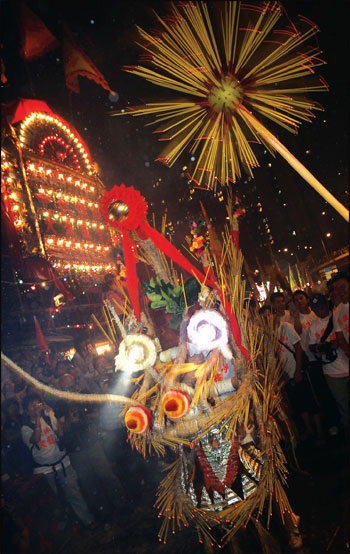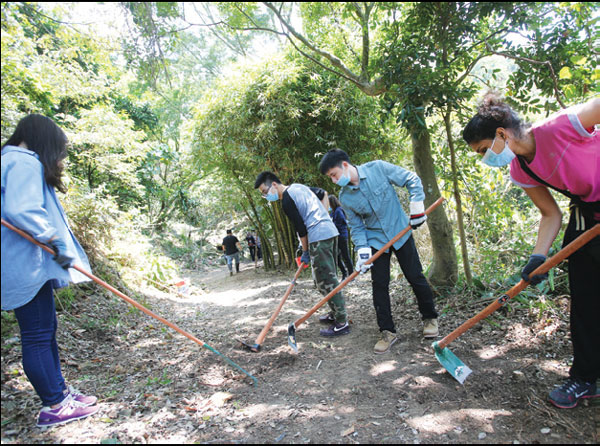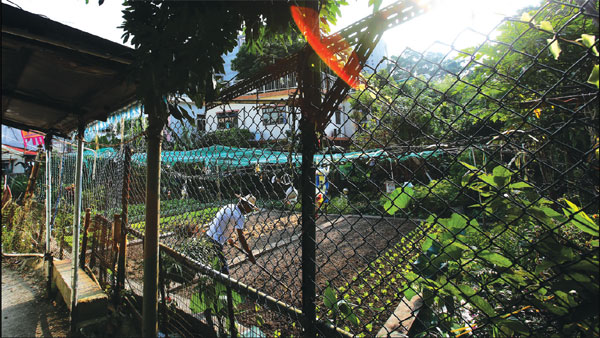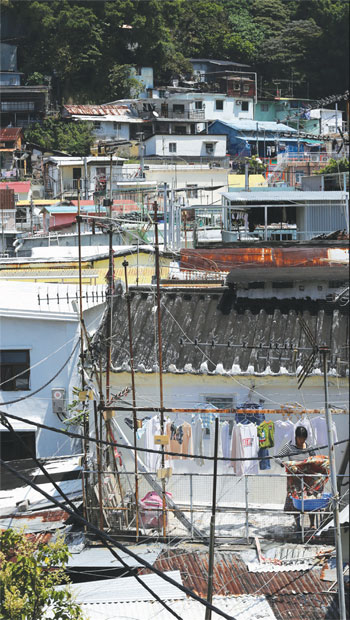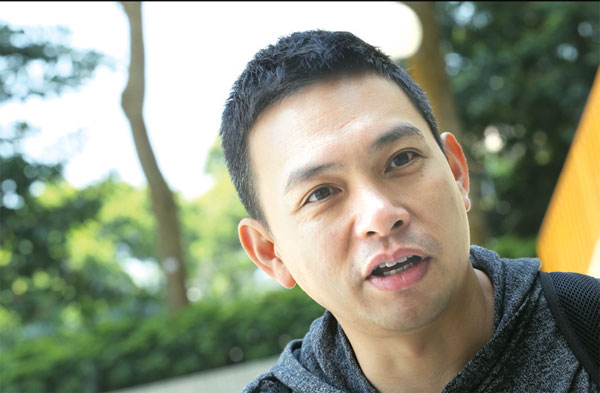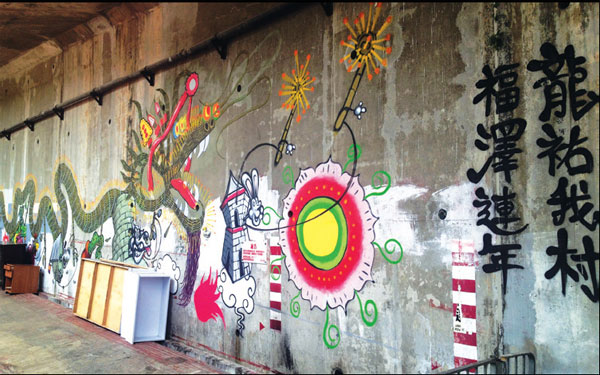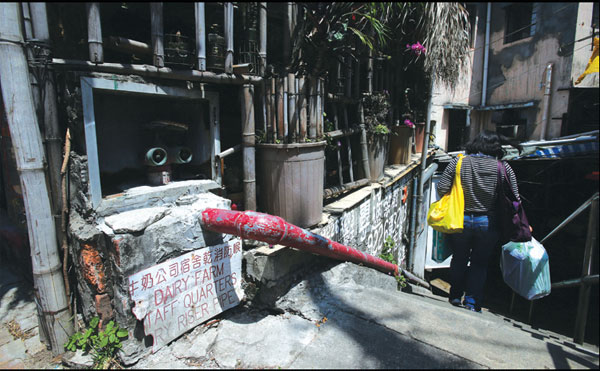Saving the endangered fire dragon
Updated: 2015-04-27 07:56
By Sylvia Chang(HK Edition)
|
|||||||||
Residents of Pok Fu Lam Village - the last hamlet on Hong Kong Island - have come together to reclaim recognition for birthplace of Mid-Autumn Festival ritual dance. Sylvia Chang reports.
'Welcome to the birthplace of fire dragon dance," says Alun Siu Kwan-lun, 53, to dozens of tourists at the entrance to his village on a sunny weekend in April. His 4-year-old son follows, repeating his father's words ostentatiously, half to himself.
Behind Siu stands an uninviting shambles of ancient two-story brick houses, stacked against the hillside. The rooftops are all shades of red, yellow, blue and green, squeezed so snugly that they look piled on top of each other, willy nilly. Out on the periphery stand a few wooden houses.
The casual observer would be excused for thinking this an uninhabited slum - a shanty town but indeed 3,000 people live here. This is Pok Fu Lam Village, the last remaining village on Hong Kong Island, and the birthplace of the earthly incarnation of fire dragon.
The village is considered a squatters' area and in the 2013 Policy Address Chief Executive Leung Chun-ying advocated it be torn down and redeveloped as part of the initiative to solve the city's affordable housing crisis.
The villagers responded with an 11-hour campaign to save their community, for every house, laneway and alley here is steeped with memories of their ancestors.
Home of fire dragon
Alun Siu was born here, and now serves as the vice-chairman for the Pok Fu Lam Village Cultural Landscape Conservation Group, which welcomes tourists to the untidy little community whose survival remains in question.
The fire dragon studio, located on one side of the entrance to the village, is a stall made of bamboo. It showcases the materials and tools used to bring the fire dragon to life. The canopy is adorned with the ceremonial heads of two fire dragons - their staring eyes keeping a close watch over the village, sharp fangs bared, ready to consume all manifestations of evil with elemental fire.
These are the legendary beasts, more than 10 meters long, which reappear in full incarnation every year at the Mid-Autumn Festival. The dragon is painstakingly crafted from straw, its sinuous body adorned with thousands of incense sticks, manifesting a force against evil that glides through the street, accompanied by drummers, beating their celebratory rhythms into each home, as the villagers pray for safety and happiness in the coming year.
"Many people only know the fire dragon dance at Tai Hung. But the tradition began at Pok Fu Lam Village about 200 years ago," Siu says.
Recorded history of Pok Fu Lam Village goes back to 1819. Siu was a member of the group that took the villagers' case to the World Monuments Fund. The New York-based, non-profit organization added Pok Fu Lam Village to its World Monuments Watch - a list of historic places considered "under threat".
The World Monument Fund said of Pok Fu Lam Village, "the modest appearance of the village belies its importance to the history of Hong Kong". The organization added, "sustainable management of Pok Fu Lam, allowing for the upgrading of building stock, will best serve this intimate community and will contribute to the preservation of the diversity of Hong Kong's urban space".
Registered architect Poon Ho-lun calls the houses in Pok Fu Lam Village "architecture without an architect". "The design, structure and the reconstructions of the houses were built without intervention of architects. The village is a product of local knowledge," he writes in a chapter of the Chinese language book Pok Fu Lam Village: A Historical Settlement below Victoria Peak.
It's surprising that the village has survived. Squatter controls place strict limits on improvements, restricting building materials to whatever was in use at the time when the last occupancy survey was made in the 1980s.
Community bonding
The support from the World Monument Fund inspired the villagers to press their campaign to save their village. From arranging docent tours to organizing various cultural events, villagers have been trying everything they could to disseminate the village culture and rebuild their community.
They have rented a 3,000-square-feet plot and built a garden, reminiscent of the gardens that existed there long ago, next to the erstwhile dairy farm that served western Hong Kong. People grow vegetables and hold community events at the garden today.
"We organize a meal party once a month in the garden. Each villager brings a plate of food to share. Some villagers steam cooked turnip puddings and dish them out to others," says Siu, pointing to a newly-built furnace.
As he speaks, several villagers are at work, tending the garden, turning the soil or taking out weeds. Siu interrupts his commentary at intervals, to help people carry buckets or move heavy stones. His son is busy digging the soil with a hoe.
"This is a way of building a sense of community. Villagers have begun rediscovering their roots, connected through generations of the village community," said Benjamin Sin Chiu-hang, registered social worker of the Caritas Pokfulam Community Development Project and co-author of the book Pok Fu Lam Village: A Historical Settlement below Victoria Peak.
Sin explained that when he first came to the village in 2005 the villagers were uncertain about the future. "Back then I talked to villagers about improving their environment. They were afraid to make changes, fearing that once people took notice of the village the government would consider demolishing it," Sin recalled.
Now villagers are active in locating and solving problems related to the village by themselves. They are more conscious about having defunct street lights changed and more pro-active in pushing the government to improve the drainage system. The villagers are also very helpful to one another, Sin said.
Since the end of March the conservation group has been working with the Caritas team to uncover an old village path, built by erstwhile Hong Kong Dairy Farm workers in the southwest of the village. The path, covered with soil, heavy vegetation and garbage, may someday serve as another tourist track through the village.
"It's a path to the old dairy farm. Decades ago the path was surrounded by cowsheds and was used to deliver supplies. Mini-cars passed by every day to deliver grass for cows and milk for people," said Nigel Ko Wing-hong, a fourth-generation Pok Fu Lam villager and also a member of the conservation group.
The Dairy Farm Group was set up in 1886 by Scottish doctor Patrick Manson and some businessmen. The Dairy Farm, which provided fresh milk to the western part of Hong Kong, soon expanded into a commercial group that owned pastures, farms, office buildings and apartments. Many of the older generation villagers worked there.
Down memory lane
The path is a part of their collective memory. It leads to the only silo left from the Dairy Farm. Ko said that the team would like to promote the community as part of the industrial and agricultural heritage of Hong Kong.
"Back then the village was surrounded by meadows," said Li Sui-wah, 55, whose family moved to the village when Li was only a baby. Sitting on the couch of his house after dinner, Li began recalling his childhood.
"I used to play 'Kam Sze Pao' on the grass with my friends. Most of them were children of workers at the dairy farm," laughs Li, explaining that the game was played by putting spiders into matchboxes and watching them fight.
The dairy company ran 24 hours every day. The stream of people brought hawkers to the edge of the village, selling soaps, vegetables, fish, medicines, stationery, etc. "Everything you needed was there. You didn't have to go out of the village," said Li, recalling Tai Gai, a narrow winding street that made its way into the village.
"But now only a few are left," Li stopped and sighed. The meadow is turned into roads. The old (dairy) buildings have different uses. All these years, Li has been watching childhood friends move away.
Like other villagers, Li has stood alongside fellow villagers in the battle to save their community. "We would like people from outside to know that the village is not a slum, but a cultural heritage worth protecting and commemorating," says Li.
The biggest problem for the village, says Siu of the conservation group, is sewage. The village has a drainage system when it rains but no system for the disposal of sewage.
According to Siu, there are only four public toilets in the village. Ten years ago, a pedestal toilet would be a luxury. The public toilets were inconvenient, especially when it was raining or windy. Within 10 years, more than 85 percent of the houses added pedestal toilets, but there's still no sewage system.
Ignited by the heat to protect the village, tens of villagers organized a group to push the government to set up a sewage system for the village. For three years the group attended conferences, talked to government officials and called for more villagers to speak out, said Siu. The project was finally approved and work is on at the back of the garden.
"Right now villagers have realized the need to speak out for themselves. We're working together for a better community," said Siu, walking home for dinner. Siu's son mutters the words learned from his father's tour of the village, skipping along at Siu's side.
Contact the writer at sylvia@chinadailyhk.com
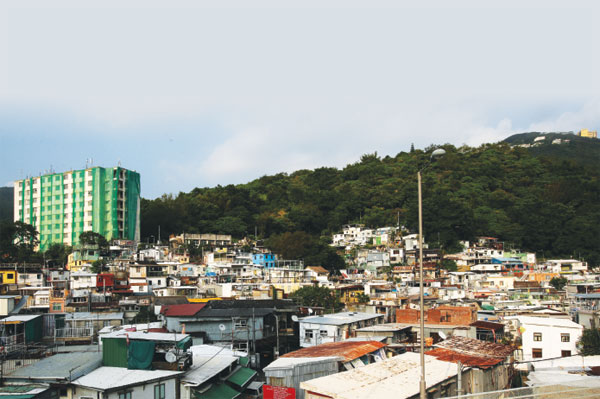
|
Pok Fu Lam village is where the traditional fire dragon dance to mark the Mid-Autumn Festival originated. Photos by edmond Tang / China Daily |
|
An old village path leading to the erstwhile Hong Kong Dairy Farm was uncovered by the conservation group. |
|
A 3,000-sq-ft plot, farmed by village residents, also serve as a community meeting space. |
|
More than 3,000 people live in Pok Fu Lam village, where waste disposal methods are still rather primitive. |
|
Nigel Ko, a fourth-generation villager of Pok Fu Lam Village, has made it his mission to protect the cultural inheritance. |
|
Graffiti on the wall provides a colorful backdrop for the ritual dragon dance. |
|
Dairy products generated in this building since 1886 would cater to a large part of western HK. |
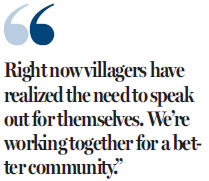
(HK Edition 04/27/2015 page6)
